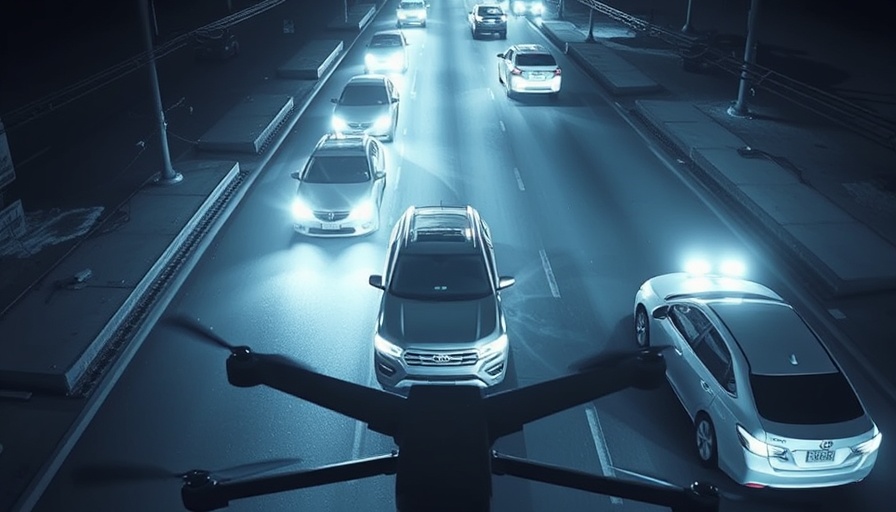
The Incident: A Snapshot of Tension and Response
On February 16, 2025, a disturbing confrontation unfolded in San Leandro, California, as a man suspected of a vehicle assault led police on a dramatic standoff that escalated into gunfire. According to body camera footage released by the San Leandro Police Department, the situation began when officers responded to a report indicating that the suspect, upset over a late child custody exchange, had intentionally rammed his car into another vehicle. This dangerous act not only endangered the primary victim but also placed the children present in potential harm's way.
How Tactical Decisions Played Out in Real-Time
Confronted by police at an intersection, the suspect initially complied with the traffic stop but soon turned hostile. Rather than following the officers’ commands, he exited his vehicle and moved toward them, prompting a heightened state of alarm. Officers, trained in de-escalation tactics, attempted to engage the suspect verbally, warning him he would be tased if he didn't retreat. Instead, he pulled out a handgun, taking cover behind his vehicle—an alarming escalation that forced officers to respond defensively.
The Role of Body Cameras in Accountability and Transparency
The incident is significant not just for its confrontation but also for the role body cameras played in providing an unbiased account of the events that transpired. The footage captured the suspect brandishing a firearm and firing towards the officers—a crucial piece of evidence that highlights the importance of transparency in law enforcement operations. The release of this footage allows for community trust to be fostered amid growing scrutiny over police actions and accountability.
Lessons Learned: Training and Policy Implications
In the aftermath of such incidents, law enforcement agencies must revisit their training protocols. This event emphasizes the need for continuous training in crisis negotiation and the use of non-lethal measures. Officers deployed bean bag rounds—an effective method to subdue suspects without causing lethal harm—showcasing how appropriate tactics can lead to successful resolutions without injury. Revising training strategies across departments while embracing advanced police equipment can enhance officer safety and civilian accountability.
Evaluating Community Relations: Bridging the Gap
The San Leandro episode serves as a sobering reminder of the ongoing challenges faced by law enforcement in community relations. Trust issues remain prevalent, yet incidents like this can be pivotal in illustrating the complexities of police work. Improved training, technological advancements, and a clear communication strategy are essential for rebuilding relationships with communities. By openly discussing challenges and incidents, police departments can foster dialogue that may eventually lead to collaborative solutions and reforms.
Future Considerations: The Path Ahead for Law Enforcement
The incident in San Leandro not only informs current police practices but also sets the stage for discussions on future policy developments. As police departments look to improve officer wellness and community trust, they must consider strategies that incorporate mental health support, stress management training, and community-centric policies. These considerations go beyond responding to immediate threats and aim for long-term stability in police-community dynamics.
As we reflect on this incident, officers and policymakers alike are encouraged to engage in deep discussions about the evolving nature of policing, advocating for reforms in training and community engagement. By leveraging technology such as body cameras and adopting modernized tactics for engagement, we can strive towards a more accountable, transparent, and effective law enforcement landscape.
 Add Row
Add Row  Add
Add 

 Add Element
Add Element  Add Row
Add Row 




Write A Comment